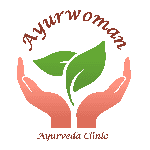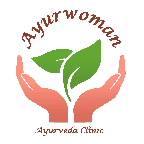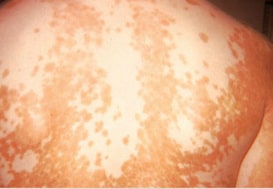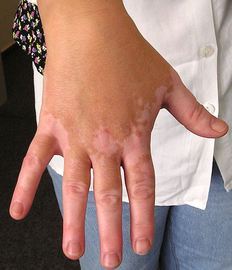Vitiligo treatment
Vitiligo is a skin disorder for which classical Ayurveda texts have described detailed treatments. Read on to find out how to manage vitiligo using ayurveda, an ayurveda diet and an ayurvedic way of living.
Intention of this article is to discuss some background information, ayurvedic view and an Ayurvedic treatment outline for vitiligo. Please do not approach Ayurvedic treatment for vitiligo in a DIY fashion. Kindly consult your Ayurvedic practitioner for your specific diagnosis, treatment plan tailored to your condition and a dosha based and disease stage based diet regime.
White spots on skin
Vitiligo is the formation of white spots on skin. They are caused when pigment producing cells become inactive. It is also caused when pigment producing cells go dormant which can happen for a variety of reasons. Vitiligo affects 1-2 % of the population.
Vitiligo in Ayurveda
The Ayurvedic term for vitiligo is Swithram or swethakushtam. Indications and ayurvedic treatments for swithram are well documented in classical ayurveda texts. Swithram or swetha kushtam means white colour or hypopigmentation and is related to an impairment of skin colour.
Ayurveda classifies vitiligo based on an individual’s dominating dosha type or ayurveda body type. These are vata dominant vitiligo, pitha dominant vitiligo and kapha dominant vitiligo respectively.
Vitiligo causes are subdivided according to the dominant dosha involved.
- Vata type: Xerotic lesions
- Pitha type: Reddish or pinkish
- Kapha type: Large or multiple with itching
Vata type vitiligo involves Raktha dhathu (blood and blood tissues). This is indicated by xerotic patches with irregular margins, decreased sweat and a dry feeling of cold. People suffering from vata vitiligo have a tendency to get gas, constipation, anxiety and insomnia.
Pitha type vitiligo involves Mamsadhatu (muscle and muscle tissues). Pitha vitiligo is indicated by almost symmetrical redskin patches which are slightly brownish red or are brownish pink in colour. This could well be accompanied by an increased feeling of warmth or burning feeling and excessive sweating. People suffering from pitha vitiligo have a tendency to get belching, burning and indigestion, loose stools, aggressiveness and short temper.
Kapha type vitiligo Involves Medhodhatu (Adipose tissue). People suffering from Kapha type vitiligo experience large multiple itchy white patches on skin. People with this type of vitiligo usually have a tendency to eat more heavily, have a craving for sweet food and usually feel depressed and may also feel lethargic.
Vitiligo causes
According to Ayurveda, the main causative factors are irregular diet, inappropriate food (virudhahara) with respect to the patients constitution (body type or dosha type) and incompatible food combination, lifestyle habits and even a genetic predisposition.
All these can derange the digestive and absorptive functions of human body. These can cause blood to becomes impure which can alter the immune functions of the body and can finally lead to an autoimmune disease.
Exposure to chemicals such as acids and bleaching agents, excessive use of cosmetics, prolonged use of hard water, injury, burn, cosmetic surgery, chronic stress, emotional trauma, poor hygiene, history of typhoid, impaired hepatic function, use of some types of plastic and rubber have also been mentioned in studies as vitiligo causes.
Vitiligo treatment in Ayurveda
Several natural treatments are described in Ayurveda texts. Ayurvedic medicines and diet regimes can vary according to the ayurvedic body type and dosha imbalance of a person.
At the initial consultation stage, your practitioner will prepare a broad treatment plan matching your body type, your stage of disease and various other life style factors unique to you. The treatment plan is normally a combination of cleansing, ayurvedic herbal preparations and ayurvedic treatments. This initial treatment plan is fine-tuned as treatment progress. The treatment plan will also involve an individualised diet chart with specific do’s and don’ts. While the do’s in the diet chart support your treatment the don’ts may reduce or even delay treatment progress.
Abstinence from the aetiology is the primary treatment which are improper diet, incompatible food and similar acts that disturb the equilibrium of vital forces (doshas) and tissues (dhatus).
Some of the specific vitiligo treatments that we follow are:
- Pre medication cleansing
- Shodhana or cleansing treatments prior to any internal medication. This will help improve the absorption capability of the digestive system.
- Ayurvedic medicines for vitiligo
- After the cleansing procedure, the person can start internal medicines to alleviate the disease.
The following classical preparations are very helpful in this situation:
- Manibhadragulam
- Khadirarishtam
- Chitrakasavam
- Thikthakam Kashaya
- Manjishtadi Kashaya
Herbs
Following single herbs can also be used.
- Khadira or Catechu (acacia catechu)
- Amalaki or Indian gooseberry (phyllanthus emblica)
- Vidanga also known as false black pepper (embelia ribes)
Yoga
Practitioners have observed that creating a healthy mind is very supportive in treatment. Practicing Yoga and meditation helps in accelerating vitiligo cure. Continuous practice of pranayama has been reported as being effective in managing vitiligo.
For quicker results, treatments should be continued in a consistent fashion for a few months. Yoga and single herb treatments can be harmlessly continued for an even longer duration with absolutely no side effects. Contact our Melbourne clinic today to make an appointment.



